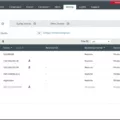Tracking hackers can seem like an intimidating task, but it doesn’t have to be. With the right tools and processes in place, you can quickly identify a hacker’s activity and take steps to reduce its impact on your system.
The first step in tracking a hacker is to identify suspicious activity. The most common signs of a hack include unusual logins or attempts at gaining access, password resets or two-factor authentication codes that you didn’t request, and login attempts from unfamiliar devices and locations. If any of these signs appear in your account activity or sign-in logs, then it is likely that you have been hacked.
Once you have identified suspicious activity, the next step is to investigate the source of the activity. To do this, you will need to use an Intrusion Detection System (IDS) or Security Information and Event Management (SIEM) package. These tools are designed to detect malicious activity by analyzing network traffic for abnormal behavior. They can be used to detect malicious IP addresses as well as other indicators of compromise such as malware, phishing emails, and other malicious code.
In addition to using an IDS or SIEM package, there are other ways that you can track down a hacker’s activities. For example, if the hacker has infiltrated your system through a vulnerable port or application then they may have left behind traces of their identity such as IP addresses or usernames. You can also search public databases for information about the hacker’s activities such as personal blogs or social media accounts which may contain clues about their identity.
Finally, once you have identified who is behind the attack you should take immediate action to protect your system from further damage by implementing additional security measures such as two-factor authentication or patching vulnerable ports and applications. You should also report the incident to law enforcement so that they can take action against the perpetrator if necessary.
Tracking hackers isn’t always an easy task but with the right approach, it is possible to identify suspicious activities and uncover their identity so that appropriate measures can be taken in order to reduce their impact on your system.

Source: bleepingcomputer.com
Tracking Down a Hacker
Yes, it is possible to track down a hacker. When a hacker attempts to gain access to a computer system, their actions often leave a traceable digital footprint. This can be used by law enforcement or cybersecurity investigators to identify the hacker’s IP address and other information about them. Investigators can also use techniques such as analyzing packets of data sent from the hacker’s computer, extracting data from hard drives, and examining logs of user activity to locate the source of the attack. Finally, by cross-referencing this information with other sources such as public records or social media accounts, investigators can often eventually find the identity of the hacker.
Detecting Hackers
Hackers are detected with the help of Intrusion Detection Systems (IDSs) and Security Information and Event Management (SIEM) packages. IDSs detect malicious activity by monitoring network traffic, looking for patterns that could indicate an attack or suspicious activity. They can also analyze system logs to detect changes in configuration files or other activities that may be indicative of a hacker attack. SIEM packages combine two strategies: log management and security event correlation. Log management helps to analyze system logs for suspicious activity, while security event correlation helps to identify malicious activities between different systems that may be connected in order to carry out an attack. Both types of software are designed to alert administrators when suspicious events occur so they can take appropriate action and prevent the hacker from succeeding in their efforts.
Checking if You Are Being Hacked
Yes, you can check if you’re being hacked. The first step is to look for signs of suspicious activity. These can include emails or text messages about login attempts, password resets, or two-factor authentication (2FA) codes that you didn’t request. You should also look for logins from devices and locations that you don’t recognize in your account activity or sign-in logs. If any of these warning signs appear, you may be the victim of a hack. It’s important to take immediate action by changing your passwords and enabling two-factor authentication if it isn’t already enabled. Additionally, if it’s possible, you should use an up-to-date anti-virus program to scan your system for malware that could be responsible for the attack. Finally, it’s always a good idea to contact your service provider and notify them of the incident so that they can help protect your account from future attacks.
Detecting a Hacker: How Long Does It Take?
The amount of time it takes to detect a hacker depends on several factors, including the size and complexity of your network, the sophistication of the hacker, and the security measures you have in place. The best way to minimize the time it takes to detect a hacker is to have an effective security system that includes regular monitoring and testing for breaches.
Your security system should include measures such as firewalls, antivirus software, intrusion detection systems, vulnerability scanning, and regular patching. These measures can help prevent hackers from gaining unauthorized access in the first place. However, even with these measures in place, there is still a chance that hackers could find their way into your network undetected.
If you do suspect that someone has hacked your network, it’s important to act quickly so they can be removed as soon as possible. The sooner you detect a breach, the less damage it can cause and the easier it will be to recover any lost data or rectify any other issues they may have caused. To help speed up the process of detecting an intruder, regularly scan your network for suspicious activity or changes in file structure or access logs as this could indicate a breach.
Overall, detecting a hacker as soon as possible is essential for protecting your network and data from further damage or theft. Taking precautionary measures such as having an effective security system in place and regularly monitoring your network for signs of intrusion can go a long way in helping you detect any potential threats quickly and efficiently.
Can Hackers Remain Undetected?
Yes, hackers can go undetected – and they often do. In the digital world, hackers can exploit security vulnerabilities in networks and systems to gain access to sensitive information without detection. After gaining access, they can move around within the system without leaving a trace or being detected by security measures.
Once inside a system, hackers can use a variety of tactics to stay hidden, including hiding their presence by masking their IP address or using encryption to conceal their malicious activity. They can also manipulate data and delete evidence of their activity, making it difficult for security teams to identify them. Hackers may even set up backdoors in networks so that they can gain access again in the future without being detected.
Moreover, hackers may launch distributed denial-of-service attacks (DDoS) which flood networks with requests and overwhelm their resources so that other malicious activities can be carried out without detection. Additionally, many organizations lack adequate monitoring tools which further allows attackers to go unnoticed while they are inside the network or have already moved on to another target.
Overall, there are numerous ways for hackers to remain undetected while exploiting systems and networks for their own gain. This is why it’s important for organizations to take measures such as implementing comprehensive cybersecurity strategies and conducting regular vulnerability assessments so that any potential threats can be identified before damage is done.
Conclusion
In conclusion, tracking hackers is not an easy task, but there are some steps that can be taken to help protect yourself. The use of Intrusion Detection Systems (IDSs) and Security Information and Event Management (SIEM) packages can help detect any suspicious activity that could be related to hacking. Additionally, paying attention to any emails or text messages you receive about login attempts or password resets you didn’t request is important. Lastly, be aware of your IP address as a cybercriminal can use this against you. By taking these steps and remaining vigilant, you can increase your chances of protecting yourself against malicious hackers.








